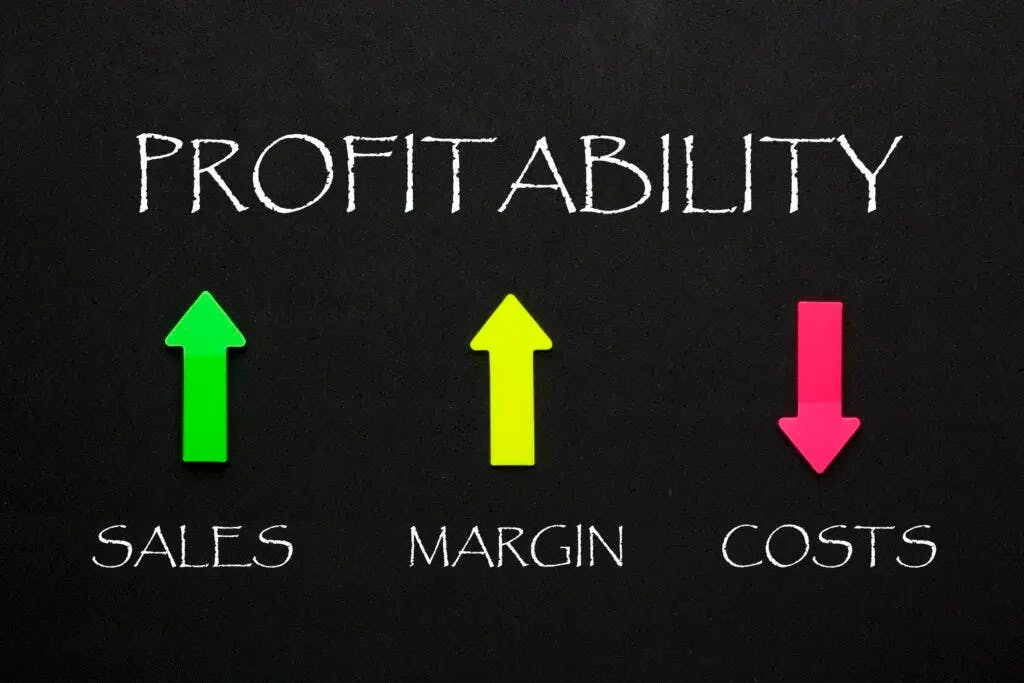How To Calculate Marginal Profit For Your Business

Marginal profit is a major indicator of success in business. It can tell you if you’re on track to healthy growth. How do you calculate marginal profit for your business?
Let’s start with a few definitions.
- Revenue: How much money did you make? If you sold 5 workouts for $100 each in 1 month, your revenue would be $500.
- Expenses: How much did you spend? Did you buy swag? Did you buy a website domain? These are expenses.
- Net income: Revenue – expenses
First things first – let’s figure out what your net income is. Our goal is to have this be a positive number.
To determine your net income, remember, it’s revenue (the total money you made) – expenses (the total money you spent.
Now that you have your net income, we can calculate your marginal profit.
Take your net income and divide it by your revenue. This will give you a decimal. Multiply it by 100 and you’ll see your profit margin percentage. Let’s do an example.
- I sold 5 work outs for $100 each – $500 in sales
- I sold 10 water bottles for $10 each – $100 in sales.
- The work outs cost me a rental fee of $100 in total
- The water bottles costs me $2 per bottle to be manufactured.
- Revenue is $500 in workouts plus $100 in water bottles = $600.
- Expenses is $100 in gym rental plus $10 in water bottles = $110.
- Net income = $600-$110=$490
- Margin = $490/$600 = .816*100= 82%
There are several different ways to calculate marginal profit.
Here are the most common ways to figure it out.
Pre-tax Marginal Profit
Pre-tax Profit Margin = (Earnings Before Taxes/Revenues) x 100
Net Profit Margin
Net Profit Margin = [(Revenue – Cost Of Goods Sold – Operating Expenses – Other Expenses – Interest – Taxes) / Revenue] x 100
Gross Profit Margin
Gross Margin = [(Total Revenue – COGS) / Total Revenue] x 100
Operating Profit Margin
Operating Profit Margin = (Operating Income / Revenue) x 100
Why Is Marginal Profit Important?
Marginal profit in its various forms can tell you, or your investors, if you’re on track to expected growth targets. Margin varies widely by industry, so there is no one-size answer to whether your margin is on track. In one high-growth tech industry, 30% profit margins might be a minimum signal of acceptable growth because there is little upfront cost to developing a particular product or service such as certain types of software. In more saturated industries with higher expenses, a much lower margin is considered healthy. It depends on the stage of your company, the industry, economic conditions, and more. Margin is important because it’s one of the biggest factors in determining how well your business is doing. Investopedia has some excellent resources if you’re still looking for more information.
How To Increase Your Profit Margins
Now that you know how to calculate marginal profit, what do you do with it? Here are some different ways to increase your profit margins:
- Streamline product offerings to the most profitable
- Raise your prices to increase profits
- Streamline operations to focus on most profitable areas of your business
- Cut some clients or services that are using more resources than they’re producing profits
- Consolidate tools and reduce spend
How do you do all this? One way is to look at your current marketing, and calculate which strategies are bringing in new clients and which marketing projects have uncertain results. You might not want to cut everything that isn’t instantly producing results. Some types of marketing can take time or be hard to track. But if you created several marketing campaigns and one is clearly bringing in more results than the others, put more resources behind that strategy and simplify the others.
Looking for a way to automate this entire process? Yottled can help you with the entire process. Come check us out!